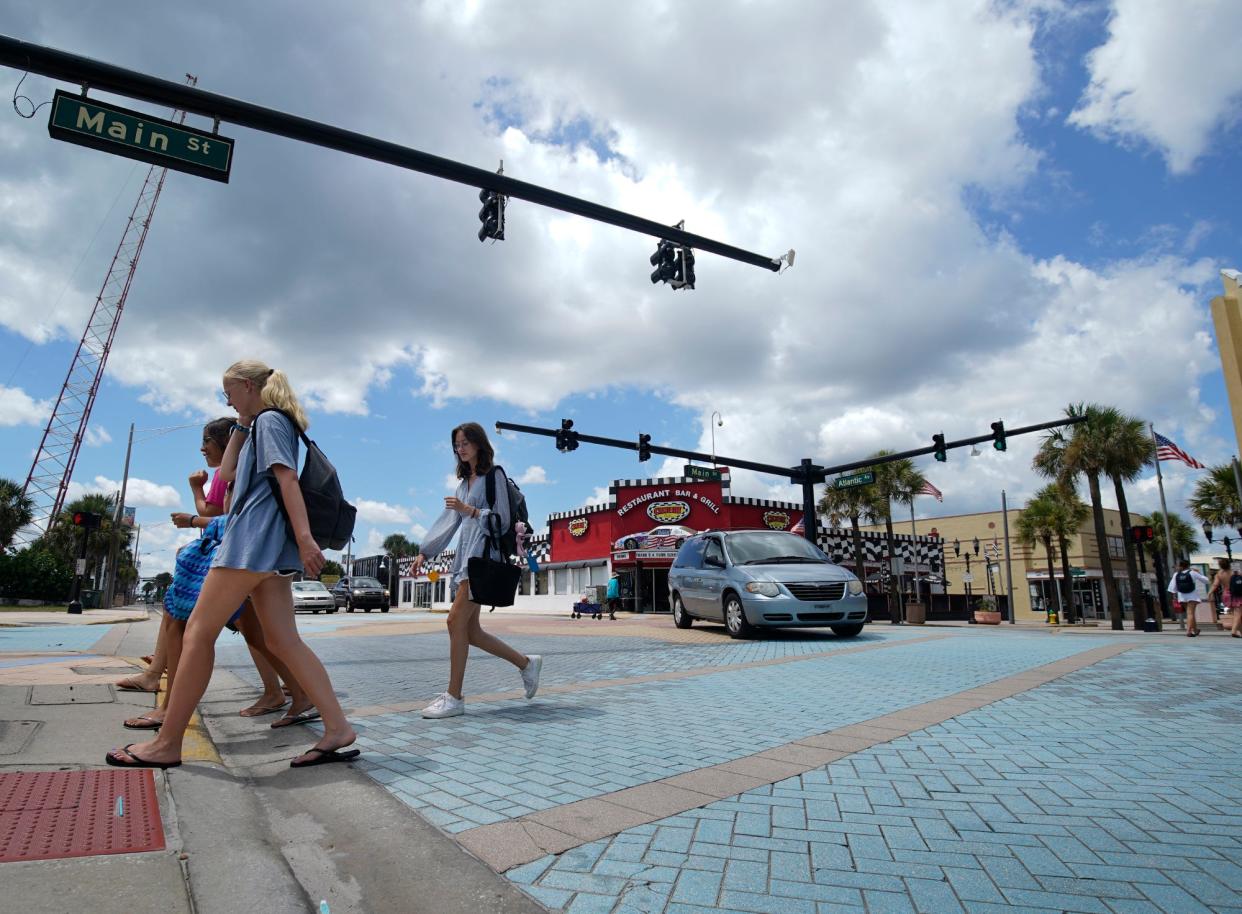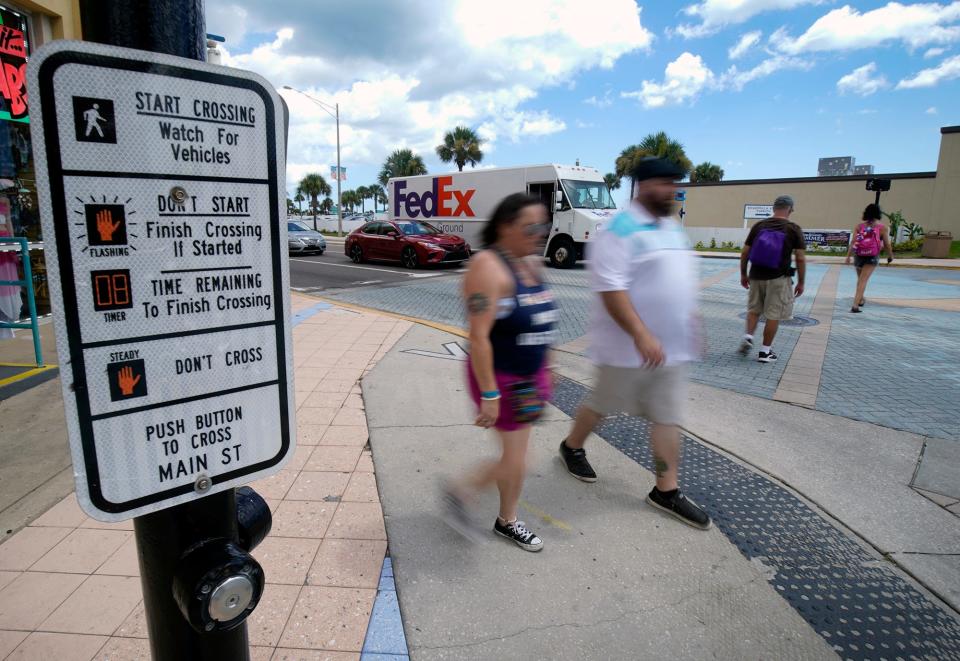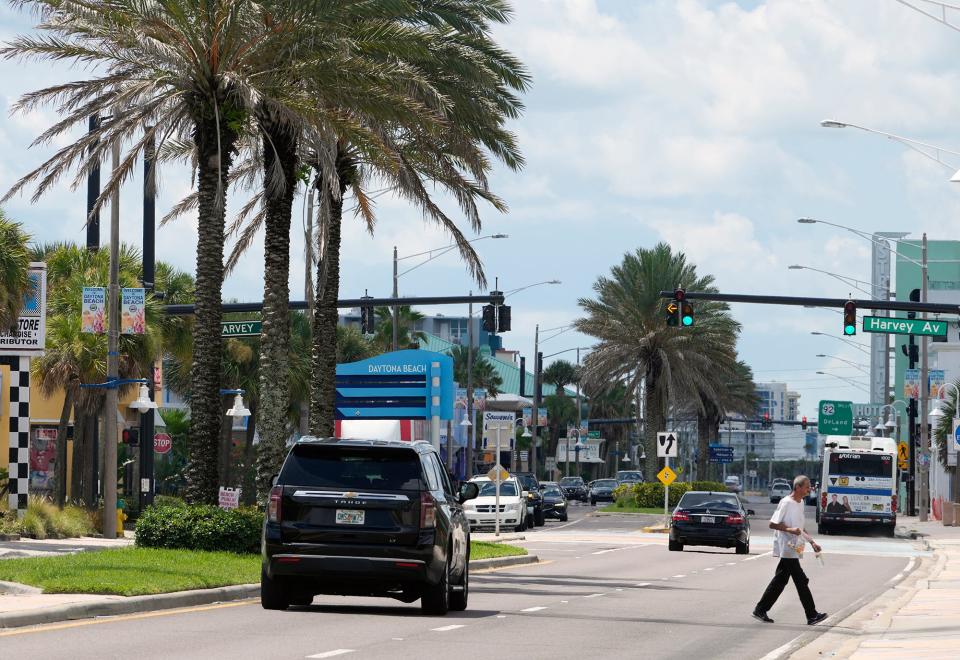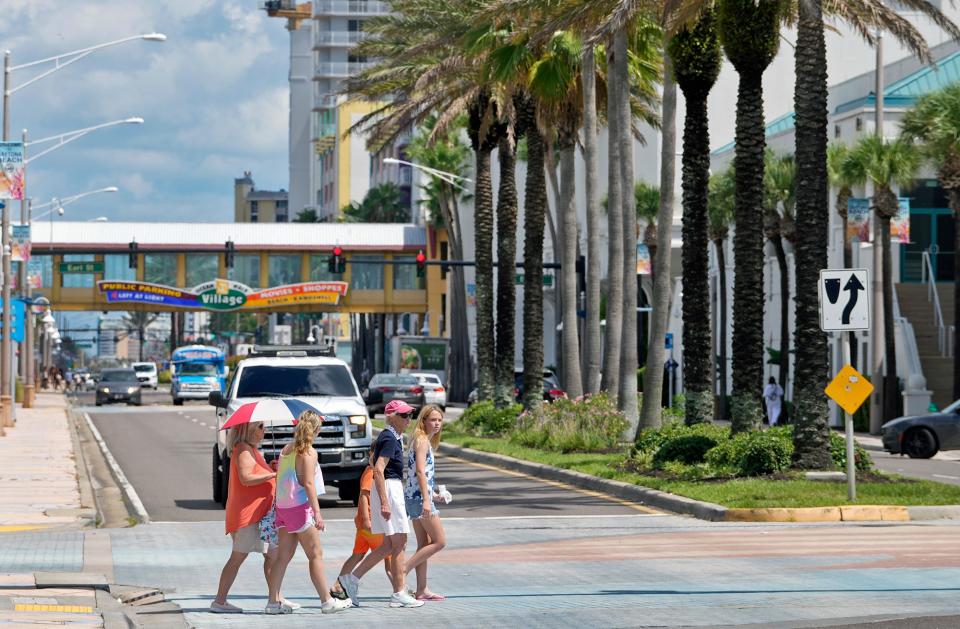Report: Pedestrian fatalities increased in 2020 despite fewer cars driving during pandemic

After years of hovering near the bottom, the Deltona-Daytona Beach-Ormond Beach metropolitan area has become THE WORST place for pedestrian safety, according to a Smart Growth America "Dangerous By Design" report analyzing traffic safety.
The study, released today, covered a five-year stretch, from 2016 to 2020, with the Volusia County cities accounting for 4.25 deaths per 100,000 population. That topped the report's list of the most dangerous 20 metropolitan areas.
"We are consistently near the top of this list and we need to do better," said Colleen Nicoulin, interim executive director for the River to Sea Transportation Planning Organization.
Dangerous By Design Report: Volusia cities again among most dangerous for pedestrians
FDOT Challenges Report: Transportation official: Pedestrian fatality report is 'inaccurate portrayal'
Dangerous for Walking: Volusia officials dispute report's findings
"For a long time roadway infrastructure — and this is how we've gotten here — was designed to move vehicles quickly from Point A to Point B. To retrofit that infrastructure, rather, to look at moving people safely is a challenge," she said, adding that the Florida Department of Transportation has been designing roadways with consideration for safety of all modes, including walking and biking. "Putting the emphasis on moving people rather than vehicles is a step in the right direction."
The newest report shows more than 6,500 pedestrians died on America's roadways — nearly 18 per day — in 2020. That total was a 4.7% increase over 2019.

But Florida is not alone in seeing increases. New Mexico surpassed the Sunshine State as the most dangerous state for pedestrians.
Beth Osborne, vice president for transportation with Smart Growth America, said of America's top 100 metro areas, 81 grew more dangerous for pedestrians in the first year of the pandemic, despite fewer miles being driven as many people worked from home.
Perhaps paradoxically, the report's authors suggested the drop in driving "likely" contributed to increased deaths in 2020. Why? Because when congestion was reduced, speeds increased.
Reducing speed limits hasn't been a solution, Osborne said.
“Design has a huge impact on behavior, often more of an impact than speed limits, because we only see speed limits from time to time, but the design is all around us all the time,” she said.
Wide, straight roads intrinsically tell drivers it's safer to travel at higher speeds, Osborne said. That's why many roads, including Oakridge Boulevard, have been revamped with fewer, narrower lanes and clearly marked bike paths and crosswalks.
“High speeds and lots of points of conflict are a recipe for crashes. They’re a recipe for mistakes and they’re a recipe for deadly mistakes," she said.

Elsewhere in Florida
Six other Florida metros made the "Dangerous by Design" list, including: No. 4, Tampa-St. Petersburg-Clearwater; No. 6, Jacksonville; No. 8, Orlando-Kissimmee-Sanford; No. 12, Palm Bay-Melbourne-Titusville; No. 14, Miami-Fort Lauderdale, Pompano Beach; No. 19, North Port-Sarasota-Bradenton.
Osborne speculated one of the reasons for Florida cities' high rates of pedestrian fatalities has to do with the state's development.
“I think Florida has so many cities in the top 20 because so many of them grew up in the post-vehicle world," she said.
Compared with states with older cities, Florida has fewer "walkable centers," she said.
"And as these communities built up around the car, Florida really embraced the idea of building these vast highway-like roadways in places that they didn’t belong," Osborne said. "Back in the ‘50s, we built our Interstate Highway System because we knew having speeds like 40, 45, 50, 55 were inherently dangerous in our communities. So we separated them. We created separated highway systems and interstate systems. But somehow since the ‘50s we forgot that and we started building them in places that are rich with conflict."
Officials at the Florida Department of Transportation said Monday they were working on a response to the report's findings, but had not yet provided that prior to the News-Journal's print deadline.
In years past, FDOT and other local officials have quibbled with the "Dangerous by Design" report's methodology, comparing numbers of pedestrian deaths with population. Because of tourism, Florida often has more people walking and driving around than its population of residents.
But some experts say Florida can and must do more to improve conditions for people walking places in its cities.

Establishing 'safe systems'
"You can argue methodology, but I can talk in general that we need a 'safe system' approach," said Maryam Ghyabi-White, a civil engineer who owns a transportation consulting firm in Ormond Beach.
She describes the approach the state, counties and cities must take as a four-legged stool.
First, safe environments must be made that way through design. "We don't have safe crossings. We don't have proper lighting and signalizations. If we want to make a change, that would be No. 1," she said.
Next, drivers must go slower and be alert. Also, pedestrians themselves need to raise their level of alertness and use crosswalks. "Some pedestrians rely on the drivers to see them," she said. "That doesn't work."
Last, other industries must invest in safety technology.
Ghyabi-White said part of the challenge is that states, counties and cities all have their own design standards for roads.
"There are a lot of county-owned and city-owned roads that are not safe. It's a movement that needs to get the proper attention and people are more and more interested in walking and bicycling, and I think that's a really good thing. It brings the congestion down."
Because of congestion, roads such as Granada Boulevard in Ormond Beach, Dunlawton Avenue in Port Orange and Nova Road spanning from Ormond Beach to Port Orange and running through Daytona Beach have been widened. Designers are looking at such decisions with a different mindset.
"I don't support six-laning or eight-laning roads in the middle of communities. It divides communities," Ghyabi-White said.
Early pedestrian death figures in 2021 look grim, too
The report notes pedestrian fatalities are up 62% since 2009.
"Preliminary data for 2021 is jaw-dropping," they wrote, noting the Governors Highway Safety Association tallied 7,485 people on foot having been killed in 2021. That represents the highest number in 40 years and one of the biggest single-year jumps in decades.
The report cites disparities in pedestrian deaths among racial and ethnic groups, with Blacks and Native Americans being killed at higher rates, as are older adults in low-income neighborhoods.
And it finds that the United States is an outlier, as the International Transit Forum said it was one of three among the 63 member countries to see an increase in pedestrian fatalities in 2020. The other two were Ireland and Switzerland, which showed smaller increases.
Never miss a story: Subscribe to The Daytona Beach News-Journal using the link at the top of the page.
This article originally appeared on The Daytona Beach News-Journal: Volusia County cities cited as most dangerous in U.S. for pedestrians

